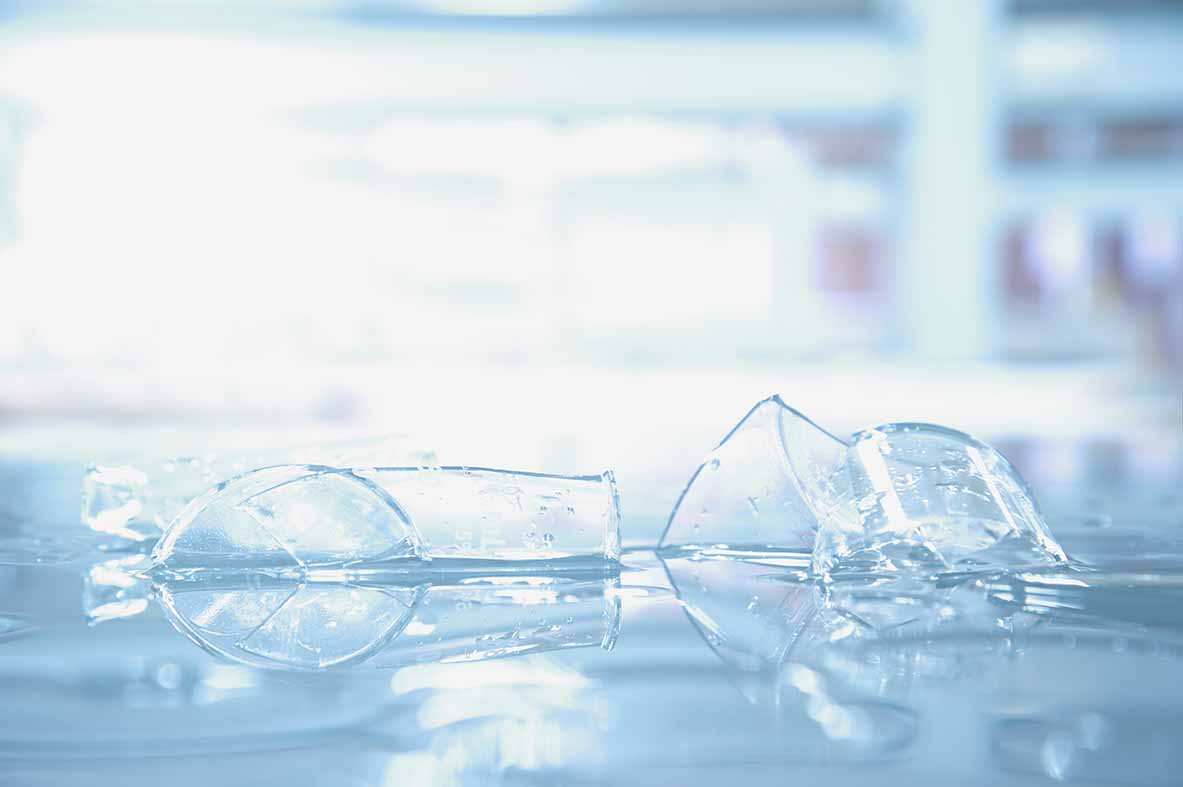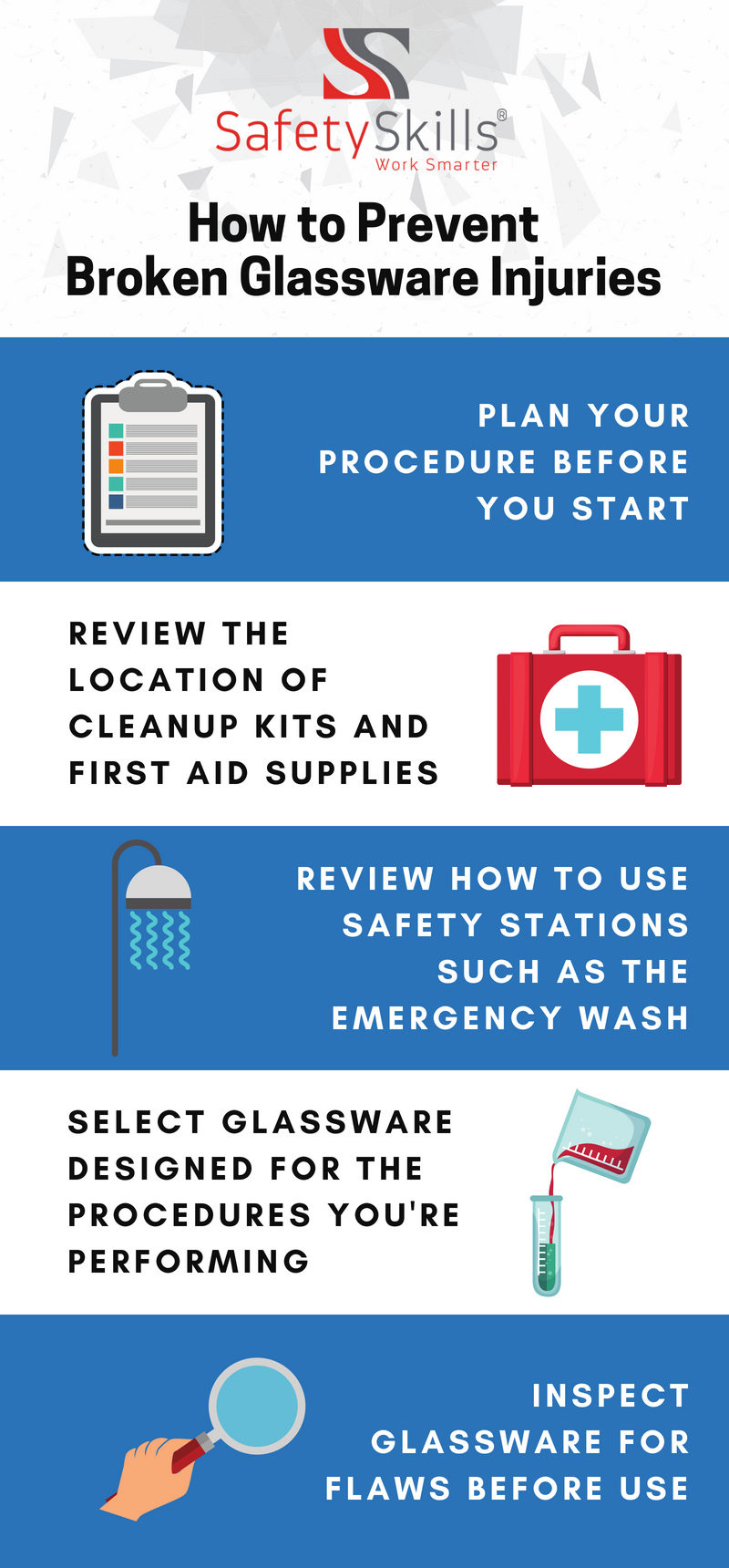No matter when and where it happens, broken glassware is an inconvenience at best. But when laboratory glassware breaks, it can do a lot of harm.
Injuries from broken glassware can range from a small cut to a serious health risk. These injuries may occur when dropping glassware and when handling fragile glassware or flawed glassware. They can also happen if you come into contact with glassware that hasn’t been disposed of properly. In rare cases, glassware can explode or implode due to pressurization or a chemical reaction. Broken glassware can also be a health risk if it is contaminated. While safe procedures are important in any lab, the following practices help prevent injuries from broken glassware.
How to Prevent Broken Lab Glassware Injuries
A lot can be done before you start your experiment to help prevent injuries. To make sure that the glassware you use is as safe as possible and to reduce the severity of an incident, follow these steps:
Broken Lab Glassware Injuries
When you work with glassware, it is important to wear all required PPE. But even if you are wearing PPE, if you notice glassware falling from a countertop, let it drop. If you happen to drop glassware during use, let it drop. Catching glass may cause it to break in your hand, resulting in cuts, punctures, or other injuries.
If you are cut by glassware:
- Allow the wound to bleed, but do not massage it to remove any remaining broken glass
- Wash the wound with warm water and soap
- Apply first aid and seek medical attention
- Follow your facility’s safety plan if the injury is severe or if you were exposed to infectious materials
- Notify your lab’s supervisor of the incident, even if it is a near-miss
Safe Cleanup
Many facilities do not allow employees to use their hands to clean up broken glass. Even if it is allowed, you should avoid using your hands if you can. Instead, use tools such as forceps, tongs, or a broom and dustpan to clean up broken glass. If you must use your hands, wear gloves made of leather, heavy canvas or cut-resistant material. Latex, nitrile, and other chemical-resistant gloves will not provide protection against broken glass. If your broom or brush cannot pick up small shards, carefully use wet paper towels, absorbent pads, or rolled up tape to pick them up.
Safe Disposal
To prevent injury, use your facility’s policy to determine the best way to dispose of the broken glassware. For example, you may conduct an experiment that contaminates glassware. In cases like this, special disposal and labeling of the container may be required. Consult your supervisor and your facility’s policy for specific disposal requirements.
How to Dispose of Glassware:
- Do not place glassware into regular trash or recycling bins
- Only use approved, rigid, puncture-resistant containers
- Make sure containers encase the broken glass
- Make sure containers are labeled
- Make sure containers have a tight seal
- Make sure that all labels are visible
- Do not overfill containers
- Dispose of containerized glassware according to lab policies
- Glassware must be emptied prior to being containerized and may need to be decontaminated according to lab policies
- Do not rinse or wash broken glass in the sink
Summary
Laboratory glassware can be dangerous if used or disposed of improperly. When dealing with broken glassware, safe handling and disposal practices can help reduce the risk of injury.
To learn more about how to protect yourself from broken glassware that is contaminated, check out OSHA’s pdf on handling contaminated sharps: https://www.osha.gov/OshDoc/data_BloodborneFacts/bbfact02.pdf



